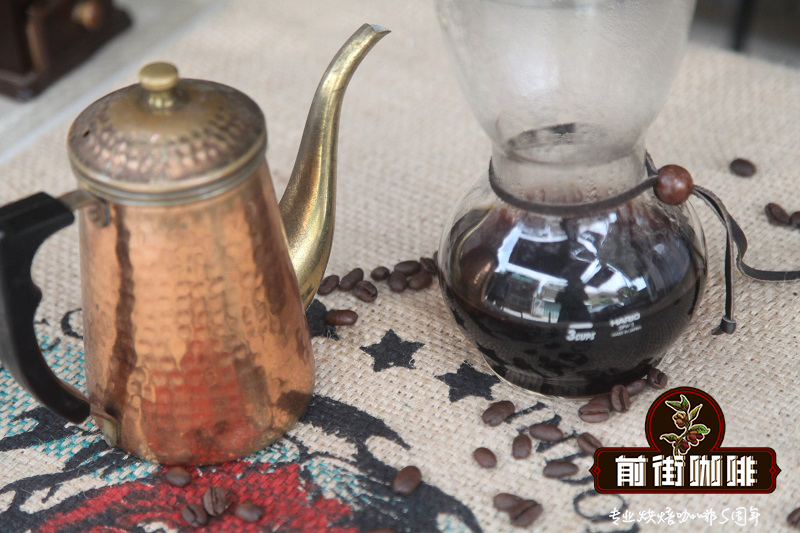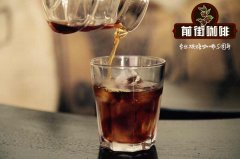Yemen mocha coffee how to drink_Yemen mocha coffee price is how much_Mocha coffee origin profile

Professional coffee knowledge exchange More coffee bean information Please pay attention to coffee workshop (Weixin Official Accounts cafe_style)
Ethiopia may be the birthplace of arabica, but the first coffee consumed by europeans in the late seventeenth and early eighteenth centuries came from yemen. At that time, African or Arabic coffee was exported from Mocha Port, and Mocha became synonymous with coffee, and Harar, the "City of Walls", became a supporting role instead. However, 300 years later, Yemen coffee is no longer in its former glory. Coffee production has decreased year by year. At present, the annual output is only 12,000 - 8,000 tons, which seems to have disappeared from the coffee map. With the current global coffee production of 7 million tons, Yemen accounts for only about 0.17%, which is already insignificant. Yemeni mocha, which used to dominate the world, has become a marginal producing country. Can it not make coffee fans feel distressed?
A trip to Yemen is bound to raise questions: "Was this once a coffee country?" As far as I could see, there was hardly anyone drinking coffee, and the streets were full of people chewing Carter grass to refresh themselves. Yemen's coffee culture, once proud, has changed its tune. There is a Yemeni ballad about coffee that goes like this: "Yemeni coffee, like gems and wealth in the treetops..." This line obviously doesn't fit today's situation.
For the past five years, Yemen's cash crop rankings, coffee has been the last, but khat grass has been dominant. In 2004, Yemen's production of catgrass reached 11 million tons, while coffee fell to 1. 150,000 tons. Yemenis seem to forget coffee exists. Yemenis are accustomed to drinking coffee before breakfast in the morning, and after breakfast or at noon they drink coffee brewed by dried coffee pulp; this kind of fruit-like tea is far more popular than coffee drinkers, and there are far more street vendors selling dried coffee pulp than coffee beans. But looking back at Yemen's coffee history, coffee fans need not give too much blame. After all, Yemenis have a longer history of drinking coffee than drinking coffee. As mentioned in chapter 1 of this book, two far-reaching elders, Shadili, the patron saint of Mocha Port and Dabani, the godfather of coffee in Aden Port, drank coffee in the fifteenth century to refresh themselves. Later, they were lucky enough to be the first to advocate coffee bean drinks with better refreshing effects. From then on, coffee romance began. Yemenis occupy an indelible position in the history of coffee evolution, and now the coffee culture is declining year by year. Yemen's Ministry of Agriculture is also very anxious to hire foreign experts to find out the crux and seek solutions to prevent Yemen's famous fine coffees-Matari, Ismaili, Sharqi, Sanani-from disappearing from the world.
The word mocha first arose in Europe in the sixteenth and seventeenth centuries, because coffee imported from the Arab world at that time was transferred from the port of mocha in Yemen, so people initially regarded "mocha" as synonymous with coffee, so until the invention of mocha pots in the 20th century, people took it for granted that this coffee brewing appliance was called "mocha pot".
As for Ethiopian mocha and Yemeni mocha, it is also easy to distinguish: Yemen's coffee was introduced from Ethiopia, and until now it still retains the same native species as Ethiopia. Therefore, later, in order to distinguish between Yemen and Ethiopia, the coffee industry called the coffee produced in Yemen "Yemen mocha" and "Ethiopia mocha" respectively, while one of the characteristics of mocha coffee is its strong chocolate flavor. So some barista cleverly added cream and chocolate to his coffee--the classic of fancy coffee--and coffee mocha was born.
Yemen mocha coffee is low-key, just like it is hidden in the countries of North Africa and West Asia. It is full of dry Gobi and desert. Although it is located on the Red Sea coast, it still maintains the most complete Arab tradition. Such geography and environment have created Yemen mocha with full personality. The coffee here grows in arid mountainous areas without any chemical fertilizers or pesticides, and some farmers even pick the coffee fruits directly after drying them on the trees.
Yemeni mocha has the same chocolate flavor as Ethiopian mocha, but Yemeni mocha is wilder and more natural. A good cup of Yemen mocha can completely satisfy the "rich taste","fresh aroma","smooth","sweet","good alcohol","sweet and long aftertaste"..., and the red wine flavor that has been sustained in the aftertaste is also one of its major features. Of course, the Yemen mocha that coffee enthusiasts enjoy is also because of its too strong personality and wild and rich taste.
● Due to low production and less coffee cultivation, Yemeni mocha coffee is becoming more and more popular, and it is difficult to taste authentic Yemeni mocha in ordinary cafes.
In addition to coffee, this coffee country also has a special coffee drink: Qishr, Chinese called ginger coffee, which is a drink made from dried coffee rind, sometimes drunk with cinnamon, sugar, ginger slices, etc.
● Let's talk about the real country of mocha-Yemen.
Mocha Harbor, the landmark that coffee lovers can't get around, is like a book full of vicissitudes.
Yemen's geographical environment is not very superior. Located in the Arabian Peninsula, desert, drought and storm are another kind of scenery. It is not only verdant under the shade of coffee trees, but also full of desolation and distance. When you think of the coffee and red fruits that come out there, it is full of sweetness. It seems that there is also the fragrance of Yemen coffee through the screen. That tree, as one said, would have been an undesirable plant in any other region, but in Yemen it was fruitful, weak, withered and almost invisible.
The most fascinating thing is this sky, this mountain, this city that seems to be isolated from the world. Coffee producing areas all over the equator, more pleasant scenery of the United States, that vast sky, continuous mountains, old city deeply imprinted in the heart.
● Yemen mocha coffee brand recommendation
Front Street Coffee roasts Yemeni mocha beans with full guarantees of brand and quality. More importantly, the cost performance is extremely high, a pack of 227 grams, the price is only 85 yuan. According to the calculation of 15 grams of powder per cup of coffee, a pack can make 15 cups of coffee, each cup only costs less than 6 yuan, compared with the price of dozens of pieces of coffee sold in cafes.
Qianjie Coffee: Guangzhou's baking shop, small store but a variety of beans, can find a variety of famous beans, but also provide online store services. https://shop104210103.taobao.com
Important Notice :
前街咖啡 FrontStreet Coffee has moved to new addredd:
FrontStreet Coffee Address: 315,Donghua East Road,GuangZhou
Tel:020 38364473
- Prev

Yemeni Mocha Coffee Bean Meaning: Yemeni Mocha Coffee Origin Story_How does Yemen Mocha taste
Professional coffee knowledge exchange More coffee bean information Please pay attention to coffee workshop (Weixin Official Accounts cafe_style) If the type of coffee is distinguished by people's age, mocha coffee is the oldest old man, deep and implicit. Mocha coffee can represent almost all coffee, its classic old mellow taste as if telling a story a long time ago. it
- Next

Authentic Yemeni mocha coffee flavor description _ why Yemeni mocha beans are so expensive
Professional coffee knowledge exchange more coffee bean information please follow the coffee workshop (Wechat official account cafe_style) Yemeni mocha coffee is the oldest coffee in the world, although Ethiopia is the first country in the world to discover coffee, but Yemen is the first country in the world to use coffee as a crop for large-scale production. In the 17th century, the first Yemeni coffee passed through ancient times.
Related
- Detailed explanation of Jadeite planting Land in Panamanian Jadeite Manor introduction to the grading system of Jadeite competitive bidding, Red bid, Green bid and Rose Summer
- Story of Coffee planting in Brenka region of Costa Rica Stonehenge Manor anaerobic heavy honey treatment of flavor mouth
- What's on the barrel of Blue Mountain Coffee beans?
- Can American coffee also pull flowers? How to use hot American style to pull out a good-looking pattern?
- Can you make a cold extract with coffee beans? What is the right proportion for cold-extracted coffee formula?
- Indonesian PWN Gold Mandrine Coffee Origin Features Flavor How to Chong? Mandolin coffee is American.
- A brief introduction to the flavor characteristics of Brazilian yellow bourbon coffee beans
- What is the effect of different water quality on the flavor of cold-extracted coffee? What kind of water is best for brewing coffee?
- Why do you think of Rose Summer whenever you mention Panamanian coffee?
- Introduction to the characteristics of authentic blue mountain coffee bean producing areas? What is the CIB Coffee Authority in Jamaica?

